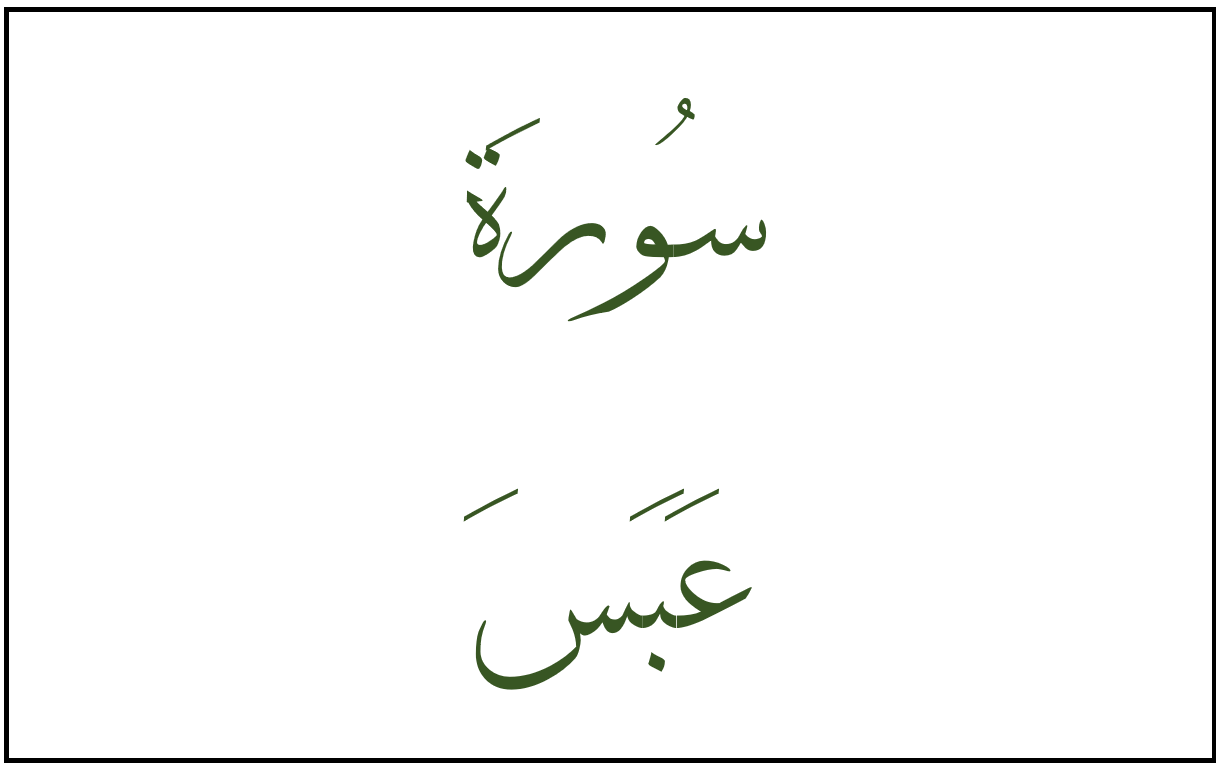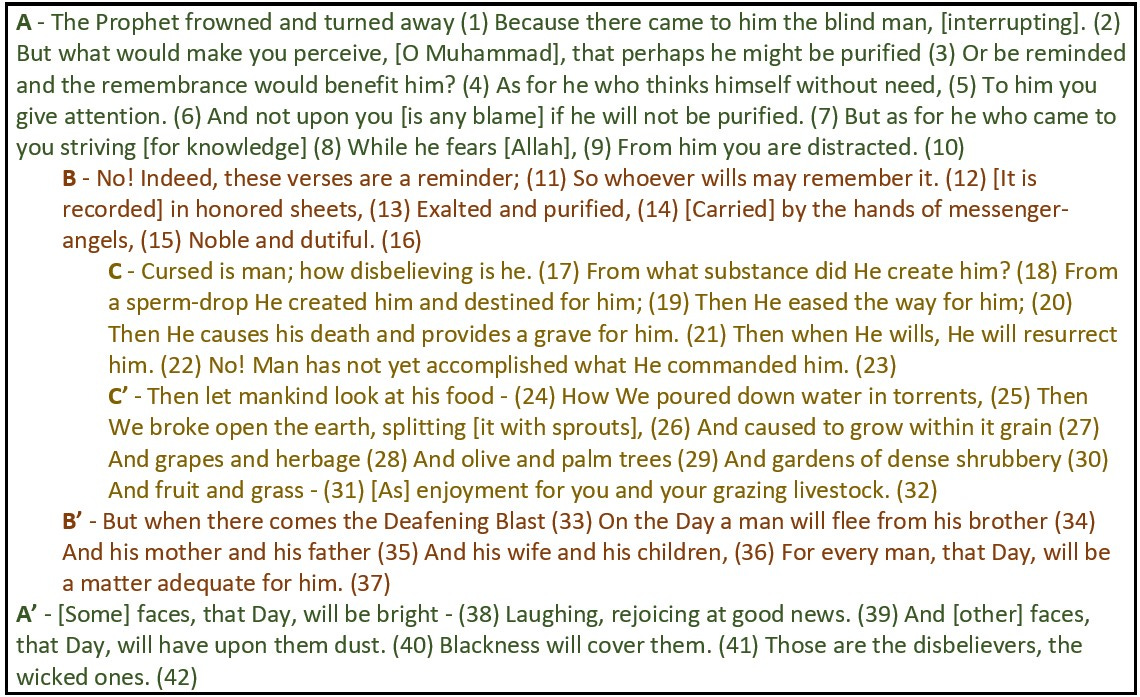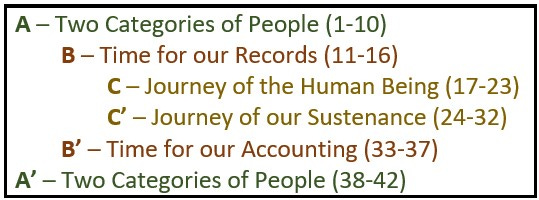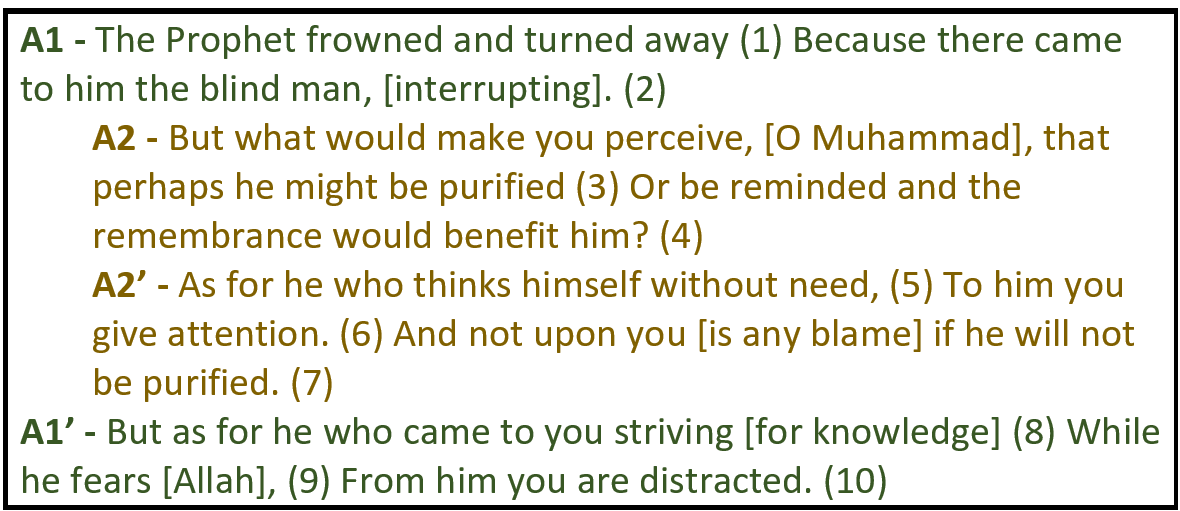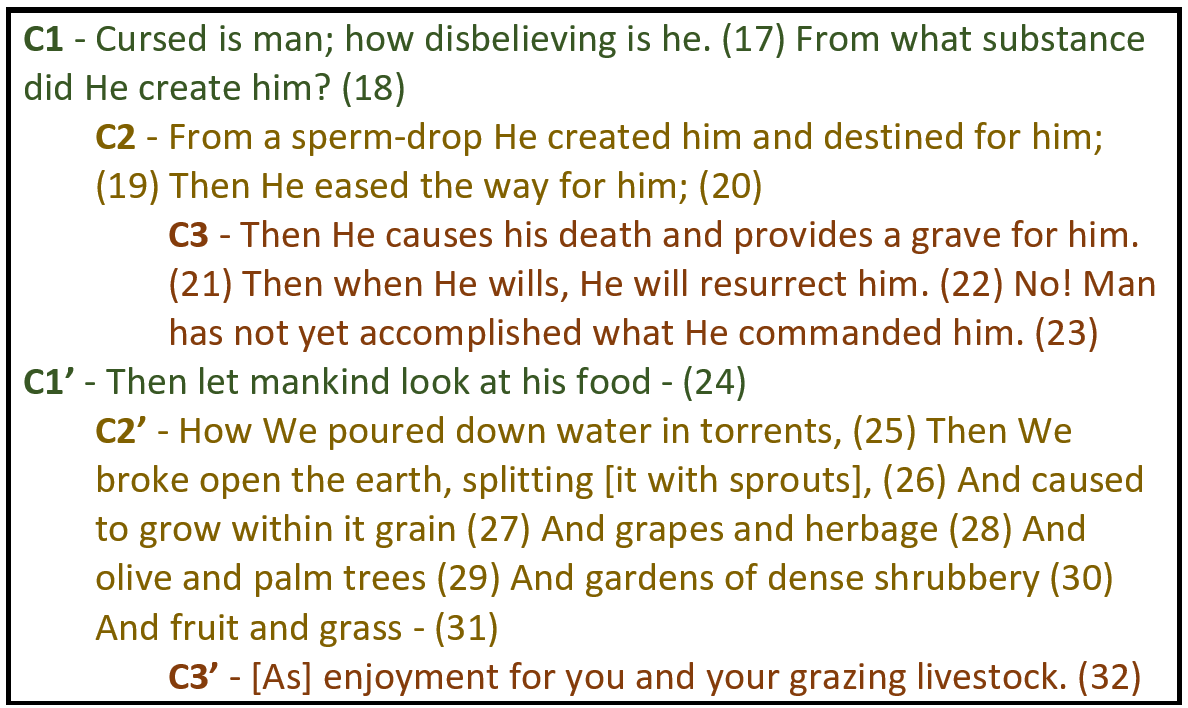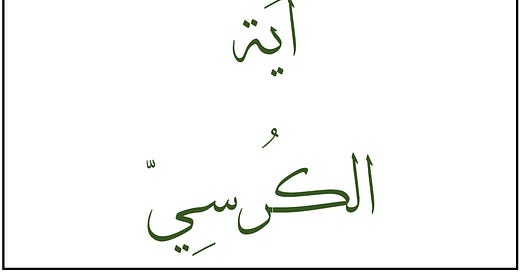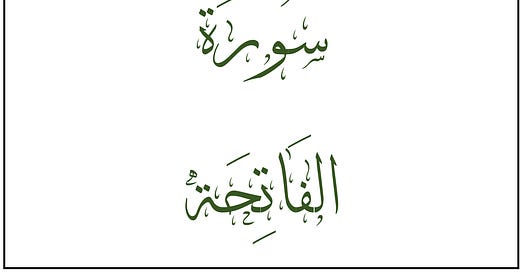

Discover more from Heavenly Order
Sūrah ʿAbasā (He Frowned) is probably best known for the opening account which censures the Messenger ﷺ for giving his attention to the elite of Quraysh (whom he hoped to guide to Islam) and for “frowning and turning away” from a blind Muslim who came seeking religious counsel.1
For the sake of brevity, we’ve chosen to omit the original Arabic, but have provided the entire translation below for reference. When the contents of this relatively short sūrah are analyzed, they appear to form a mirror structure as shown below.
Or summarized more simply:
Connections
[A]/[A’] - The sūrah begins and ends describing two categories of people. In [A], Allah ﷻ mentions one group looking to be “purified”, and He mentions another group who will “not be purified,” seeing as they perceive themselves to be “free of need.” The ending of the sūrah mentions, presumably these same two groups, but on the Day of Judgment. Those who followed the Messenger ﷺ and purified themselves will be “rejoicing at good news.” The other group, the disbelievers, will be covered in doom and gloom as a consequence of their choices.
Another parallel is in the attention to facial expressions. The sūrah begins by mentioning the frown of the Messenger ﷺ (and the blindness of the companion can be argued to be included in this as blindness is typically apparent by looking at someone’s face). The ending mentions faces that are “bright” and “laughing” and others which have “dust upon them” and “darkness covering them.”
Interestingly, Section [A] seems to form its own independent mirror structure.
[A1]/[A1’] - The outsides of this mirror structure address the issue of the blind man and the Messenger ﷺ turning away from him.
[A2]/[A2’] - The center juxtaposes the two groups. One group came hoping to be “purified” while the other thought himself without need and “will not be purified.”
[B]/[B’] - The sūrah then transitions to speaking of how our deeds are recorded in this life. There is consideration given to both the record of our deeds, as well as the ones who record those deeds. The corresponding section describes the chaos on the Day we will be made to stand for accounting. Everyone will be “preoccupied” with the thought of what is to come. The pairing of these sections may suggest that we should preoccupy ourselves with our recording of deeds in this life to avoid being as preoccupied with our accounting in the next life.
Again, there appears to be a smaller organization embedded in this sūrah. The contents of Section [B] seem to form their own ring structure.
[B1]/[B1’] - Both are described as karīm (honor/noble). Both our records and the recorders are held in high esteem.
[B2] - The center beautifully describes the two outer portions; the “exalted” records held in the highest level of Paradise, and the “purified” scribes who record our deeds.
[C]/[C’] - The center of the sūrah is arguably the most noteworthy as it contains within it a section which some orientalists, Montgomery Watt for example, claim has no place in the structure or cohesion of the sūrah. They would argue that Section [C’], The Journey of Our Sustenance, is an erroneous insertion by “the compilers of the Quran” (i.e. not Allah ﷻ). But, when one reflects on its placement in the sūrah, they will find an amazing parallel to the subject matter preceding it.
[C1]/[C1’] - Both sections implore the listener to reflect on what is about to come. How were we created? Where does our food come from?
[C2]/[C2’] - Mankind was made from a drop of sperm which Allah ﷻ facilitated the growth of. And when that baby was fully formed, Allah ﷻ “eased the way” out of his mother for him. In a similar fashion, our food comes from drops of water which causes the plants to grow. The seeds are able to sprout through the earth by means of Allah’s guidance.
[C3]/[C3’] - Finally, we die and are returned to the earth awaiting our eventual resurrection. In a similar vein, the plants are enjoyed by animals and humans, which eventually defecate those seeds back into the earth where the cycle will renew again, with new plants growing from the earth.
Through this incredible parallel, Allah ﷻ is possibly indicating to us that when we see our food, we should reflect on our life and eventual resurrection. This lesson may have been lost had Section [C’] not been placed right after Section [C].
Sources
The parallels between [C] and [C’] are taken from the work of Nouman Ali Khan. The remaining breakdown is from personal reflections and research.
Many important notes about this incident. 1) The blind man could not see the slight frown on the Messenger’s face, so he could not have been offended. 2) The blind man was actually the one interrupting the Messenger’s already ongoing conversation, and yet, Allah ﷻ still reproached the Messenger ﷺ which demonstrates the high standards he ﷺ was being held to. 3) This is one of a handful of examples of the Quran immortalizing the misjudgments of the Messenger ﷺ, which would be a strange thing to do if he was the actual author of this Book.
Subscribe to Heavenly Order
Exploring the Divine Structure and Coherence of the Quran. Join us as we dismantle the myth of the "disjointed" and "random" organization of Islam's Revealed Text.




